Recent Articles
Popular Makes
Body Types
2022 Lexus NX vs. 2022 Audi Q5

2022 Lexus NX 350 F Sport ・ Photo by Brady Holt
As recently as a decade ago, compact sports sedans were a brand’s bread and butter. They were best-sellers that also introduced buyers to the brand’s philosophy and appeal. Today, that role is filled by compact luxury crossovers — and one of the best-sellers is fully redesigned this year. That’s the 2022 Lexus NX, which has more power, more space, better fuel economy, improved infotainment, and other advances over its predecessor.
To see how it fits into its market class, we tested two of the new NX’s four versions: the turbocharged NX 350 and the NX 450h+ plug-in hybrid. We also tested two versions of the popular Audi Q5: a standard model and the higher-performance, sportier-looking SQ5 Sportback. In this review, we’ll discuss how the Lexus and Audi compare across eight categories and name an overall winner. Keep reading to learn our pick and figure out which one sounds like the better choice for you.
Pricing and Features
Lexus increased the redesigned NX’s prices. The 2022 NX 250, featuring a new entry-level 203-horsepower four-cylinder engine, starts at $37,950. The turbocharged 275-horsepower NX 350 starts at $41,550, the NX 350h hybrid starts at $41,050, and the NX 450h+ plug-in hybrid starts at $55,560. All-wheel drive costs $2,000 extra on the NX 250 and is standard with the other powertrains. The entry-level 2021 Lexus NX 300, featuring a 235-hp turbo, had cost $37,610; the 2021 Lexus NX 300h hybrid cost $40,160.
Still, even after the increases, the NX typically costs significantly less than the 2022 Audi Q5. The Audi starts at $44,100 with its base 261-hp turbocharged engine and all-wheel drive, a plug-in hybrid model starts at $52,900, and the 349-horsepower SQ5 performance model starts at $53,900. The Q5 has a few more standard features than the NX — including genuine leather upholstery instead of imitation leatherette, tri-zone automatic climate control, and a wireless smartphone charger — but that doesn’t offset the Lexus’s advantage to folks who want to get into a nice luxury suv without blowing their budgets.
Lexus NX
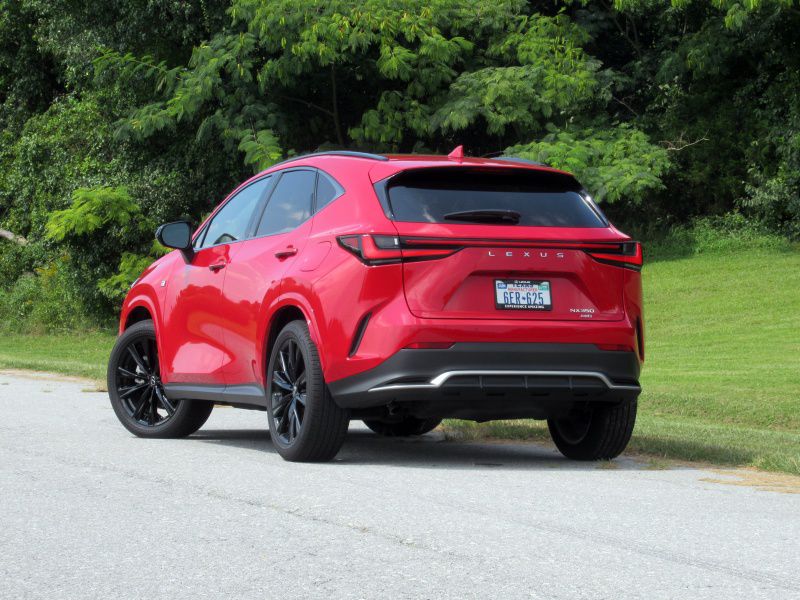
Photo by Brady Holt
Exterior Design
The first-generation NX, which debuted in 2013, was edgy and sporty. It looked like an extra-tall hatchback, it had sporty slashes for headlights, and sharp lines abounded. The 2022 NX is a softer take on Lexus’s design language. There’s still a big grille, but for better or for worse, the sharpness is gone. Especially from the rear, we find it classier than before, but it’s less fun-looking and less adventurous. The NX also looks small for its size; to some tastes, that means it has less presence, but others will welcome it as unintimidating.
The Q5 is another conservative crossover. It’s crisper than the new NX, but it’s also simpler. Boxy headlights sit on either side of a mesh grille, and there’s an upright roof on most models. Extroverts might pick the Sportback body style (pictured on this page). It’s an “SUV coupe” configuration that’s available on the standard Q5 and the SQ5 but not the plug-in hybrid. It has the same front end and four doors as the regular Q5, but as the name implies, the back takes a sportier approach; the roof slopes down toward the rear of the vehicle. It’s not the practical choice, but the Sportback provides a more dynamic-looking way to get the Q5’s other strengths. Overall, we’ll let you choose your own aesthetic favorite.
Tie
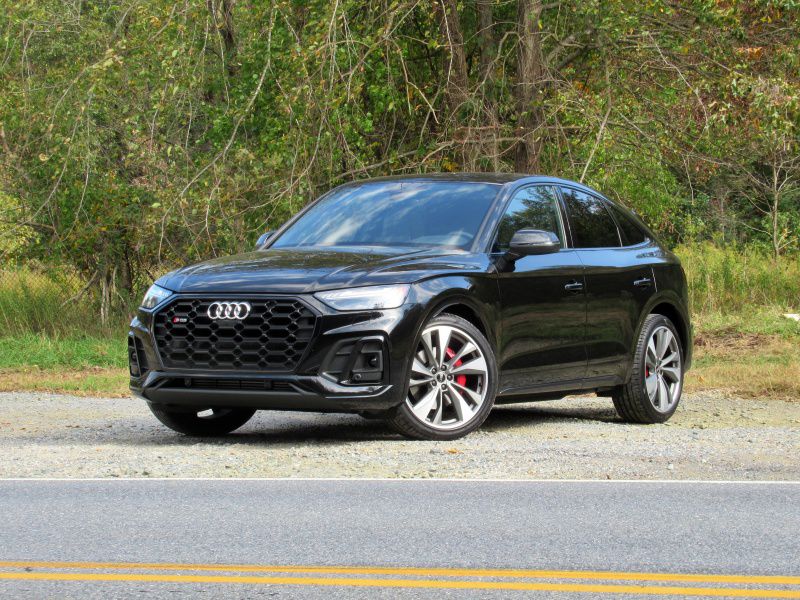
Photo by Brady Holt
Interior Design
The 2022 NX introduces Lexus’s next-generation infotainment system on a pair of plus-size touchscreens. A big 9.8-inch unit is standard, and a 14-inch unit is also available. That’s what we had on our test vehicle. The big screens catch the eye, especially since they’re built into the dashboard rather than perched on top. But Lexus didn’t do much with all that real estate; there’s lots of empty space, and it’s that much harder to reach the part of the screen you want. And by incorporating the climate controls into the touchscreen, the NX not only becomes more distracting to operate but also leaves less space on the screen for other displays. Even the steering-wheel controls are fussy, forcing multiple steps to use certain buttons that you should be able to identify by feel. It’s a big step up from the previous-generation NX’s touchpad-based infotainment, at least, and the cabin materials have gotten richer as well.
Still, the Q5 impressed us more. It’s not our favorite Audi interior of all time, but it has nicer materials than the Lexus and beautifully precise moving parts. Its standard 10.1-inch touchscreen, introduced last year, is nothing like the massive Lexus’s — and it has lots of unused space, too. Audi’s “Virtual Cockpit” customizable gauge cluster is beyond reproach, though. And with simpler controls and a higher-quality feel, we pick the Q5.
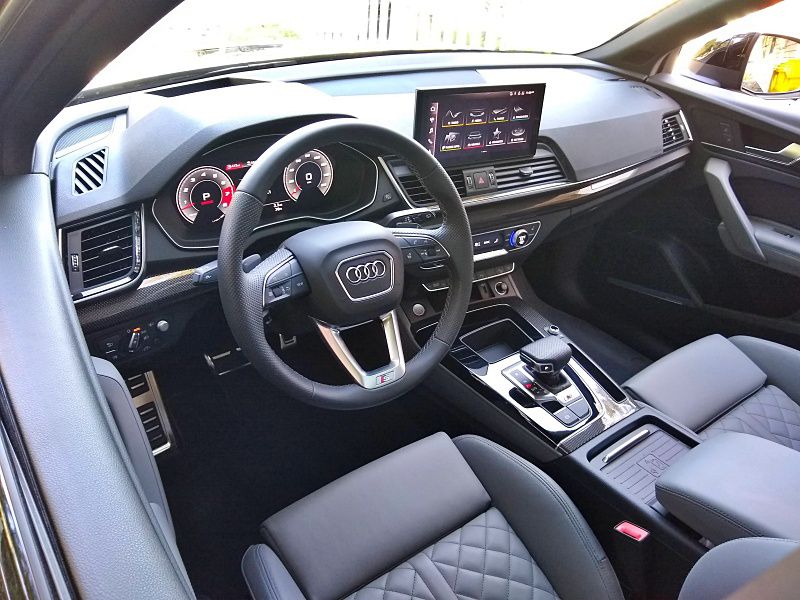
Photo by Brady Holt
Interior Comfort
The Q5 can fit four adults without too much squeezing. Even the Sportback’s lower roof leaves enough rear headroom for most passengers. Heated genuine leather upholstery comes standard, and ventilated front seats and heated rear seats are also available.
Still, we came away more impressed with the Lexus’s accommodations. Although the redesigned NX has less space on paper than the Q5, we had an easier time stretching out in the front and rear. We also preferred the bolstering of our test vehicle’s front seats; they are included on the F Sport performance-themed models, while other NX models have flatter seats that will suit some tastes more. Whichever NX version you choose, you can also get the same welcoming comfort features as the Q5, so it wins this category.
Lexus NX
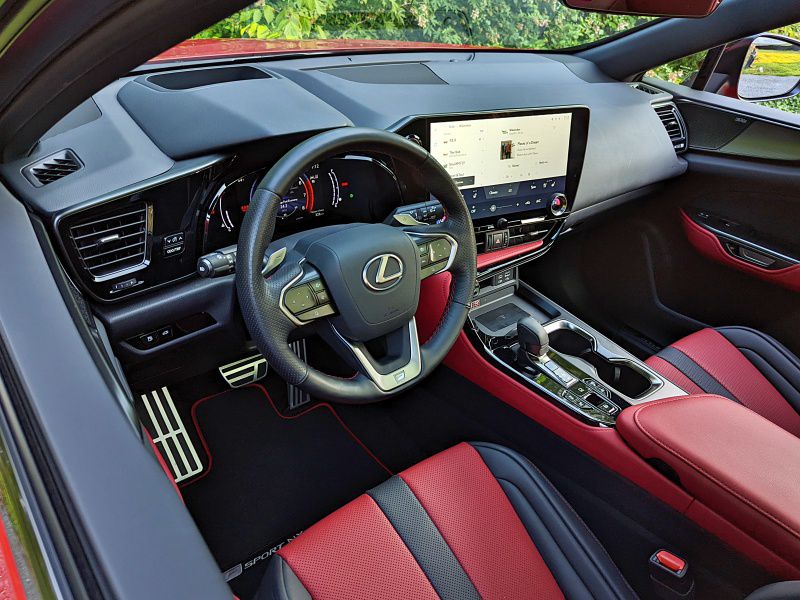
Photo by Brady Holt
Cargo and Utility
The redesigned 2022 NX boasts 22.7 cubic feet of cargo space behind its rear seat, up from last year’s tiny 17.7 cubic feet. However, folding the rear seat now yields just 46.9 cubic feet, down from last year’s 54.6 cubic feet. It’s still useful, and perhaps roomier than the numbers suggest, but that’s a low spec for this class.
The Q5 isn’t the roomiest compact crossover, but it does have more cargo room than the NX, at least based on the numbers. The standard model, pictured on this page, has 25.8 cubic feet behind the rear seat and 54 cubic feet with the rear seat folded. The Sportback doesn’t even give up much space, yielding 24.7 cubic feet behind the rear seat and 51.9 cubic feet behind the front seats. The Q5 can tow an excellent 4,400 pounds with either its four-cylinder or six-cylinder engine, and 2,000 pounds in plug-in hybrid form. The NX tows a more modest 2,000 pounds in all its versions, including the two hybrids.
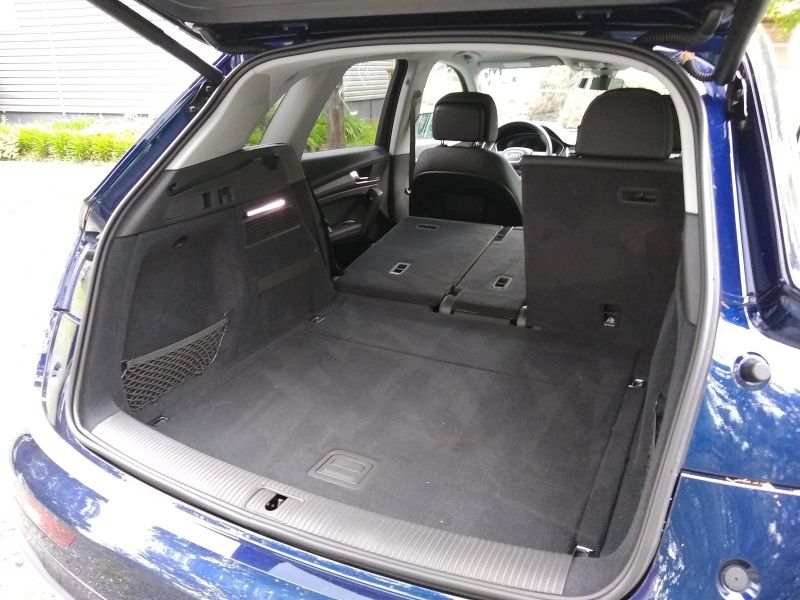
Photo by Brady Holt
Driving Impressions
The previous-generation NX was a relatively sporty crossover, with a stiff ride that benefited its agile handling. The new model trades some of its handling edge for a gentler ride, which we’re sure many buyers will appreciate. It’s still agile for an SUV, especially on the F-Sport model, but it’s not the vehicle we’d pick for spirited driving. The NX 250, NX 350h, and NX 450h+ share their powertrains with the Toyota RAV4, RAV4 Hybrid, and RAV4 Prime, respectively. Of those three, only the latter delivers the smooth, effortless acceleration we expect from a luxury suv. The NX 350, by contrast, hits 60 mph in a zippy 6.6 seconds but has a raspier sound than we’d prefer in such a premium vehicle.
We preferred driving the Audi. Its ride is firm but not stiff, and while its handling isn’t eagerly sporty — even on the SQ5 — it tackles corners with effortless aplomb. We’re even bigger fans of the engines. The Q5’s base engine has less horsepower than the NX 350, but it hits 60 mph in just 5.7 seconds and sounds nicer. The Q5 plug-in hybrid is quicker than the NX 450h+, too, and Lexus sells no equivalent to the extra-quick rich-sounding V6 SQ5.
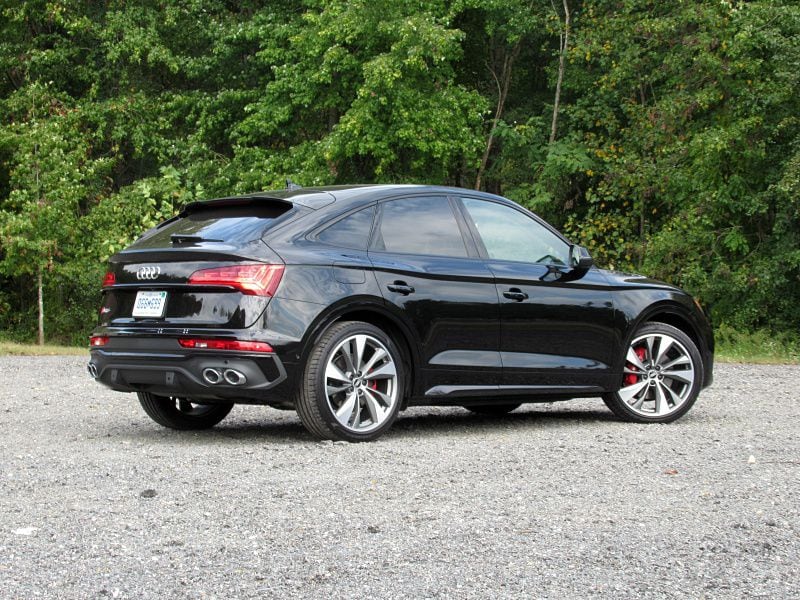
Photo by Brady Holt
Fuel Economy
Despite its speed, the base Q5 returns commendable EPA estimates of 23 mpg in the city, 28 mpg on the highway, and 25 mpg combined. The plug-in hybrid can travel 23 miles on an electric charge, then returns 26 mpg once that charge is used up. The max-performance SQ5 manages 19 mpg city, 24 mpg highway, and 21 mpg combined, reasonable for a 349-horsepower SUV.
Still, the NX is more economical. The NX 350 only ties the Q5 — 22 mpg city, 29 mpg highway, and 25 mpg combined — but Lexus gives you more options for further fuel savings. The NX 250 gets 28 mpg, the NX 350h gets 39 mpg, and the NX 450h+ can travel an excellent 37 miles per electric charge before averaging 36 mpg. Budget-minded buyers can also use regular-grade fuel in the NX 250, though Lexus recommends premium in the NX hybrids and requires it on the NX 350. In our non-scientific testing, we averaged 28 mpg in both the NX 350 and the Q5, along with 23 mpg in our SQ5. Our NX 450h+ managed 41, 43, and 45 miles of all-electric range on three respective full charges, and it averaged 41 mpg while using only gasoline.
Lexus NX

Photo by Brady Holt
Safety
The NX earned the highest possible rating of Top Safety Pick+ from the Insurance Institute for Highway Safety — a slightly better score than the Q5. The National Highway Traffic Safety Administration hasn’t yet tested the new NX, but the old model earned a top five-star score, as did the Audi.
The NX also comes packed with advanced safety features. New this year, its automatic emergency braking system can detect cars trying to make a left turn in front of you, as well as cyclists and pedestrians that you might strike while you make your turn. And it can help you swerve out of the way when the brakes aren’t enough to avoid a crash. The Lexus will also warn you if you try to open the door into the path of an oncoming car or bicyclist, and a newly available rearview camera mirror lets you eliminate blind spots. The Audi has a more conventional list of safety gear, but until the new NX can fully prove itself in crash tests, we’ll call this category a tie between two highly safe SUVs.
Tie
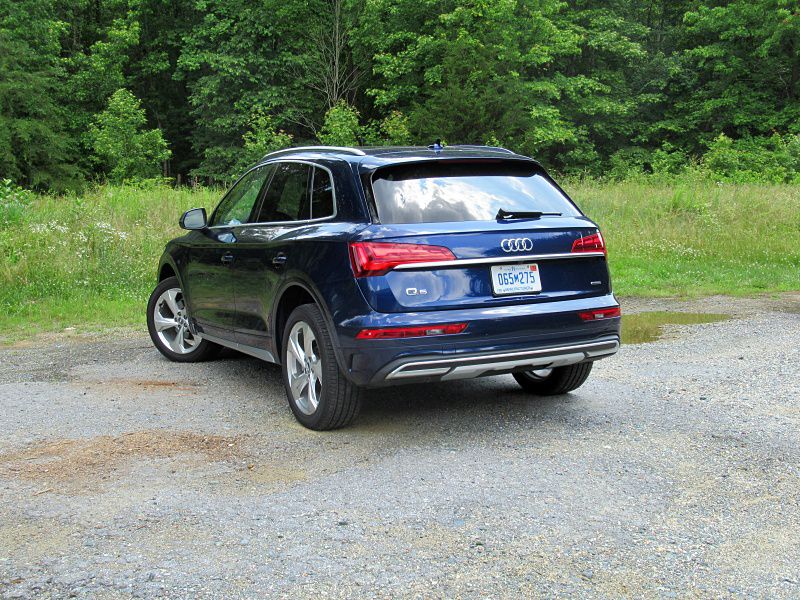
Photo by Brady Holt
Final Thoughts
The redesigned NX will be a welcome improvement for many buyers. A roomier cabin, a more conventional interior, more safety features, and a wider selection of engines, and a smoother ride are clear upgrades in any vehicle. And the gentler styling may also broaden the NX’s appeal. Especially if you’re focused on affordability and fuel efficiency over zippy acceleration or a perfectly built and ergonomically simple cabin, the NX has a lot to offer.
Still, the Q5 is the better all-around luxury suv. It feels like a more premium product than the NX, with richer interior materials, a better-sorted suspension, quieter engines, and quicker acceleration. We appreciate its simpler controls, and its Virtual Cockpit continues to be a delight. You pay a bit more for the Q5, to be sure. And it can’t match the NX’s hybrid versions. But especially in the gas-only versions, the Audi is the one we preferred spending time in.
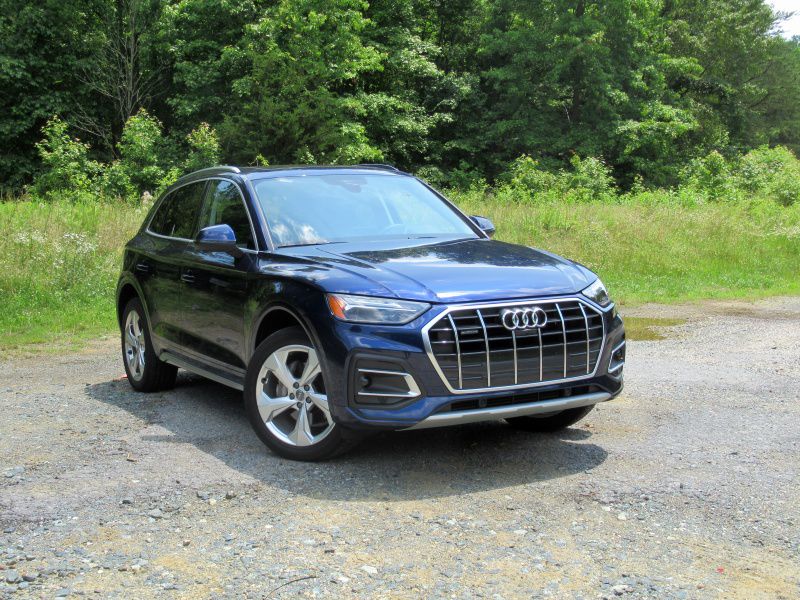
Photo by Brady Holt